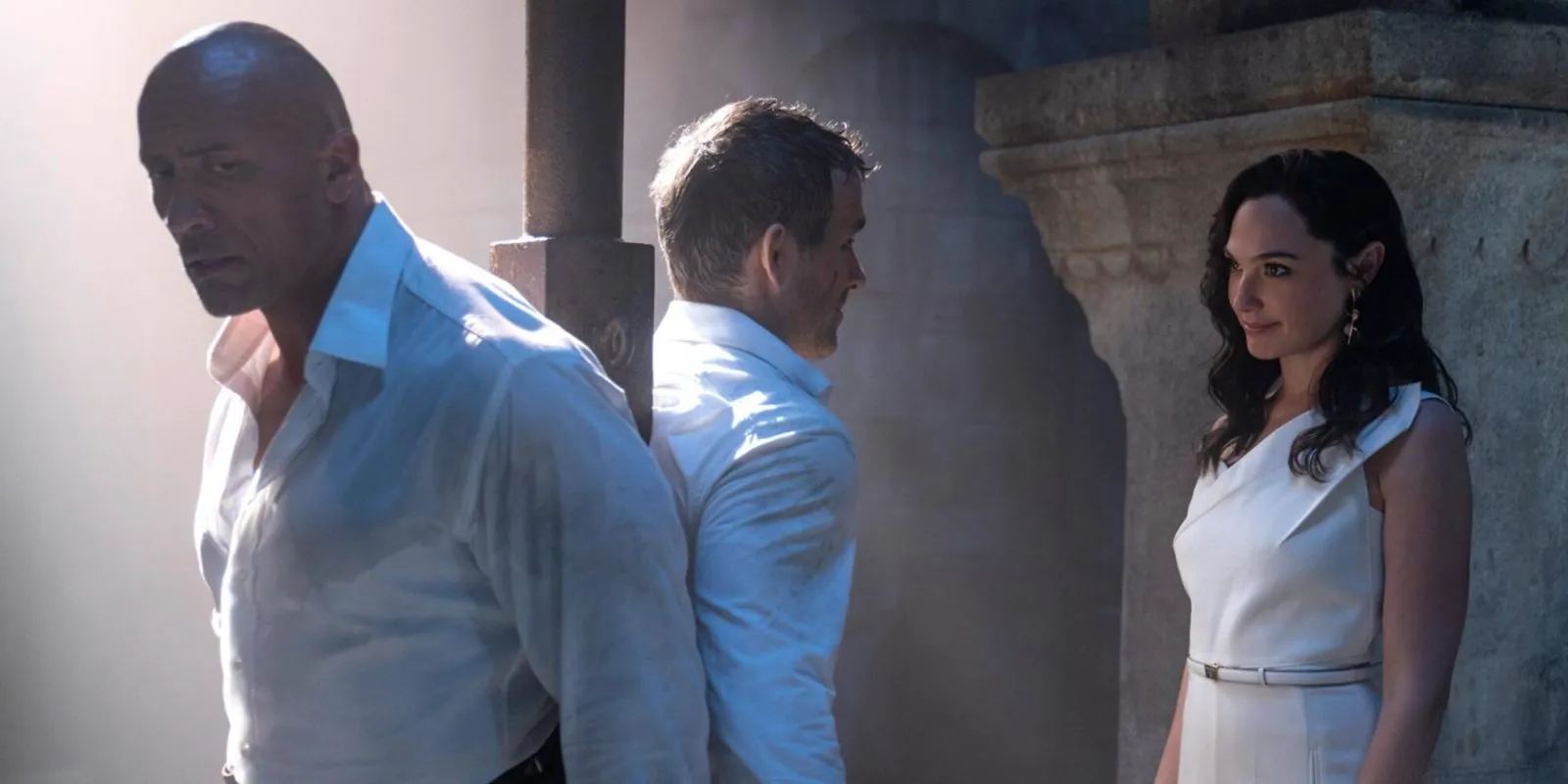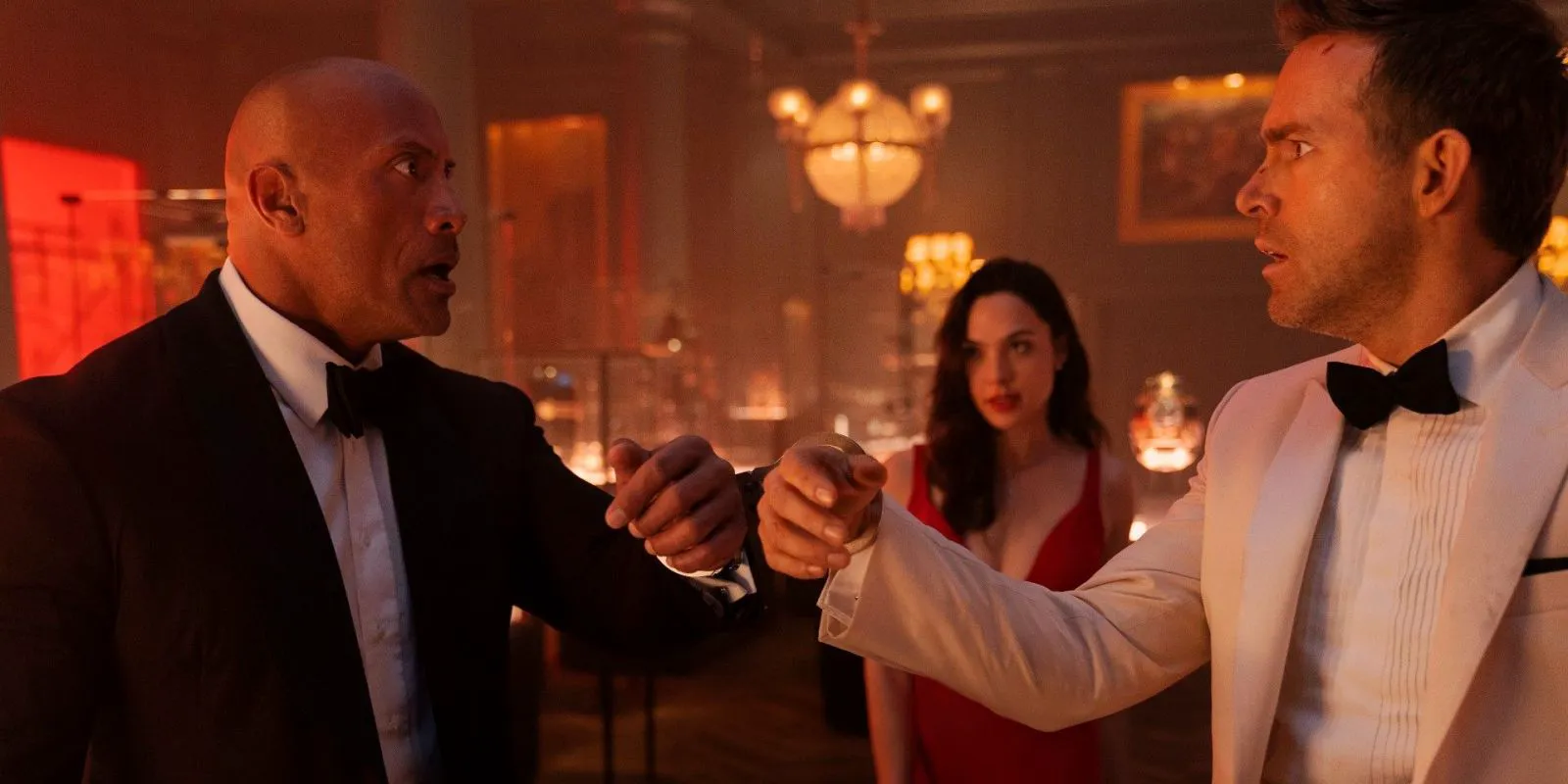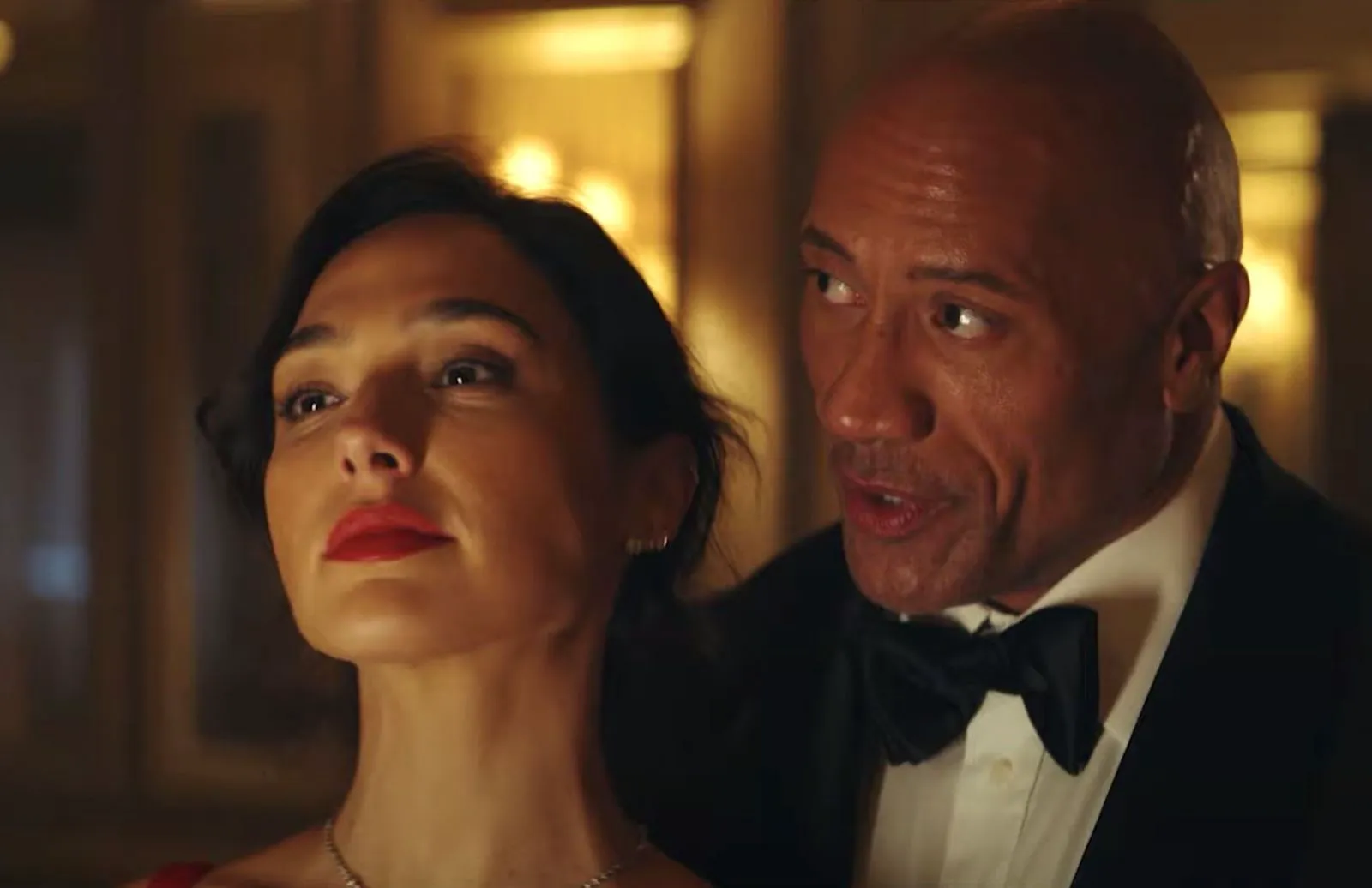FBI agent John Hartley (Dwayne Johnson) is on a mission to capture one of the world’s most notorious art thieves, the cunning Nolan Booth (Ryan Reynolds), who is planning to steal one of Cleopatra’s Eggs. The arrest is successful, but the artifact is snatched right from under the agent’s nose by an even more accomplished thief, “The Bishop” (Gal Gadot), who then cleverly frames Hartley and gets him thrown into the same prison where Booth is already serving time. Together, they must devise a plan to escape and find all three eggs before The Bishop does, in order to clear John’s name, catch the criminal, and restore Nolan’s reputation as the world’s greatest thief. There’s just one catch: the location of the third egg has been unknown for over two thousand years.

Gal Gadot as Sarah Black in a still from “Red Notice”
Red Notice: Content Over Substance
It’s not particularly interesting to discuss “Red Notice” as a film. Familiar phrases describe it far better than any film-critical terms: it’s the kind of “movie for the evening,” “perfect with a beer,” that’s unlikely to upset anyone but will certainly be forgotten about a minute after the end credits roll. In short, it’s the ideal cinematic equivalent of the word “content”—a soulless and artless product that will surely set a few viewership records on Netflix (it already is) and then fade into oblivion. Until, of course, they release an equally pointless sequel.

Ryan Reynolds as Nolan Booth in a still from “Red Notice”
What’s intriguing here is that “Red Notice” is currently Netflix’s most expensive project and, consequently, one of the highest-budget films of the year. In this sense, it serves as a perfect case study of modern Hollywood, a quintessential example of what almost all major studios are striving for in their strange quest to make the most boring action movies possible. It’s a film that seems to have been made according to a textbook, following a tried-and-true formula for the ideal blockbuster: a huge budget, multiple locations, global stars in the leading roles, and a thrilling plot about ancient artifacts and Nazi gold. However, everything alive has been drained from the formula, leaving only a plastic shell and insistent nods to other films. There’s music that’s almost “Bond-esque,” and “Indiana Jones” casts a long shadow over the characters (at one point, Reynolds even whistles John Williams’ famous melody). Perhaps the creators wanted to draw a line and establish a connection to the past, but instead, the references only constantly remind us that beyond “Red Notice” there is also genuinely good adventure cinema.

Dwayne Johnson as John Hartley in a still from “Red Notice”
The Problem with Big Budgets
What’s the point of your big budget if all the action scenes (of which there are only three) are still poorly rendered on a computer? Why fly to different countries and flaunt it in promotional materials, only to film the actors in close-up against a green screen for the entire movie? What’s the point of flashy details about Nazi gold and myths about Cleopatra if the plot still focuses on Freudian psychology at the level of preschoolers and Reynolds’ childhood traumas (just like in another bad blockbuster with Ryan, “The Hitman’s Wife’s Bodyguard”), and the only unexpected plot twist can be predicted about an hour in advance?

Gal Gadot as Sarah Black in a still from “Red Notice”
A Lack of Creativity
Every scene in “Red Notice” reminds us that this is a film made by people with a pathological hatred of creative risks and any creativity in general. That director Rawson Marshall Thurber, the author of “Skyscraper” and “Central Intelligence”—films that stand out for their resounding mediocrity even against the backdrop of Dwayne Johnson’s already unremarkable filmography. That The Rock himself, having achieved star status, seems to have decided to completely abandon any somewhat unconventional roles (no more crazy drug addicts from “Pain & Gain”). That Reynolds, since the release of “Deadpool,” has never played anyone other than Ryan Reynolds. In comparison, Gal Gadot, with one smirk throughout the film, looks almost interesting—although she doesn’t do anything special either.
The Future of Blockbusters
Despite all this negativity, “Red Notice” is worth watching. But not to have a good evening—only Reynolds’ barbs are pleasing here, and only one out of ten at that—but to see what kind of blockbusters we should expect in the new era of streaming. “Bond” is over, and it’s unknown when (and how) it will return; Tom Cruise will soon be too old; Marvel got scared of Sam Raimi and are gradually moving to Disney+ anyway; Nolan has stopped making money; Villeneuve is more interested in looking at sand than making movies; someday, maybe, George Miller will make a new “Mad Max,” if he has time. Big cinema is run by people who have no idea how to shoot action, and they ruin any efforts of their stunt coordinators (probably very talented) with editing. Only smaller films try, but they will never see such box office and budgets. The plastic world has won.